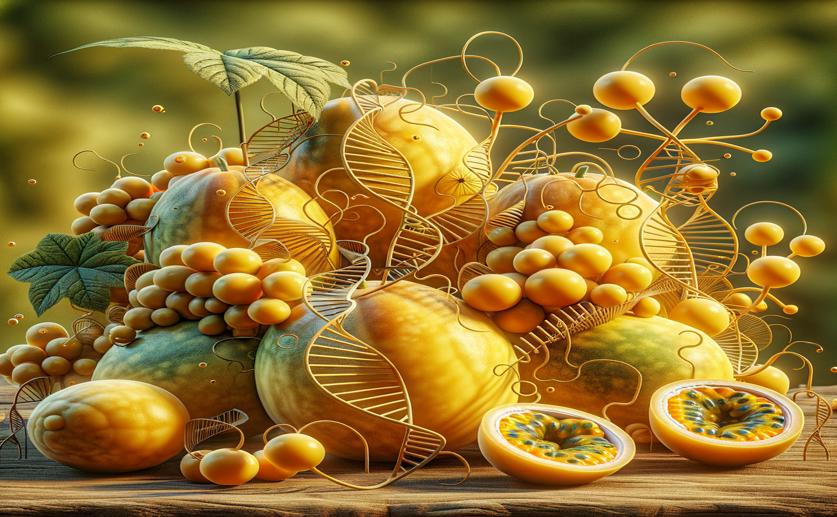
Genetic Diversity of Yellow Passion Fruit Using DNA Markers
Jim Crocker
21st August, 2024

Image Source: Natural Science News, 2024
Key Findings
- The study evaluated the genetic diversity of 84 Yellow passion fruit cultivars from nine farms in Miraflores, Boyacá, Colombia
- Researchers found low genetic differentiation between cultivars, indicating genetic diversity is not confined to specific locations
- The study revealed higher observed heterozygosity (0.50) than expected (0.43), suggesting healthy genetic variation within the population
References
Main Study
1) Diversity and genetic structure of yellow passion fruit in Boyacá-Colombia using microsatellite DNA markers.
Published 21st August, 2024
https://doi.org/10.1590/1519-6984.282426
Related Studies
2) Detecting the number of clusters of individuals using the software STRUCTURE: a simulation study.
Journal: Molecular ecology, Issue: Vol 14, Issue 8, Jul 2005
3) Seed Structural Variability and Germination Capacity in Passiflora edulis Sims f. edulis.
4) Genetic breeding and diversity of the genus Passiflora: progress and perspectives in molecular and genetic studies.



 17th May, 2024 | Jenn Hoskins
17th May, 2024 | Jenn Hoskins